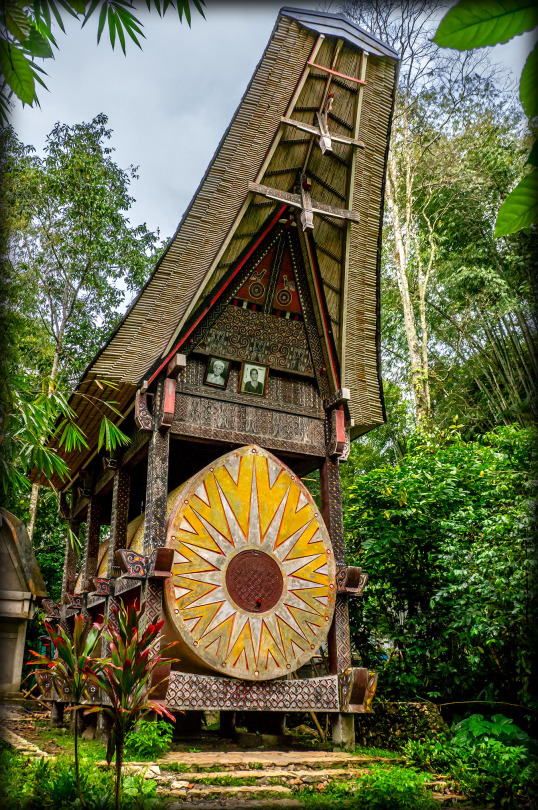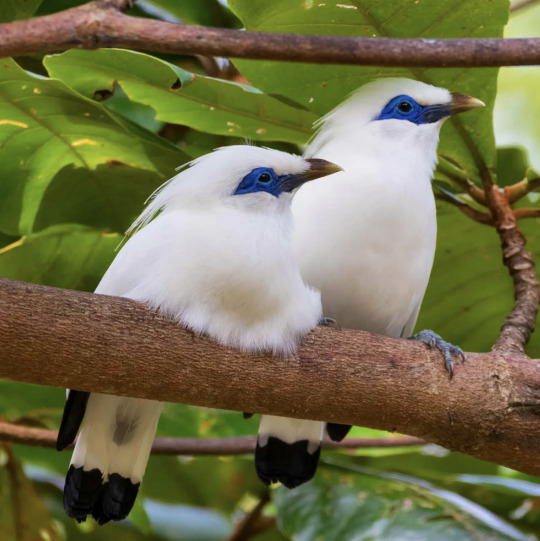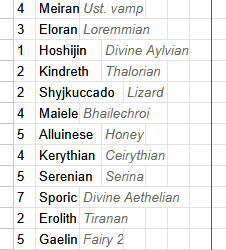#java populer
Explore tagged Tumblr posts
Text
"A trial programme providing a free meal a day has yielded not just financial relief for households but also improved child nutrition and student outcomes such as attendance and focus.
The free school lunch initiative for children from poor or disadvantaged families was introduced by President-elect Prabowo Subianto and Vice-President-elect Gibran Rakabuming Raka as one of their key campaign promises. Mr Gibran is President Joko Widodo’s elder son...
The pair – who won the Feb 14 presidential election by a landslide and will be inaugurated in October – had in the lead-up to the polls pledged to offer free lunches and milk for students as well as nutritional aid to toddlers and pregnant women in a bid to lower the country’s stunting rate.
Over 20 per cent of Indonesian children under the age of five experienced stunted growth in 2022, according to the United Nations. Stunting, which is being too short for one’s age as a result of poor nutrition, can result in long-term development delays.
When fully implemented by 2029, the programme will cover 83.9 million beneficiaries across the world’s fourth-most-populous nation of nearly 280 million, and cost over 400 trillion rupiah (S$33.7 billion) a year – about 2 per cent of annual gross domestic product.
But on the ground, a trial that was first rolled out in January at 16 schools in Sukabumi, in West Java, has been warmly received by around 3,500 students, their parents and school leaders, who have seen positive changes.
For one thing, saving on the cost of lunches for four of her nine children has provided significant financial relief for Indonesian housewife Rofiati, 46.
Her husband, a teacher at an Islamic boarding school in Sukabumi, earns 2.5 million rupiah a month on average, and the free school meals have helped them save about 420,000 rupiah monthly, which she can put towards other household needs.
Her children do not usually have breakfast before school. Before the free lunch programme, her children would eat lunch only upon returning home from school. Lunch would usually consist of instant noodles, or dishes of vegetables, eggs, tempeh or salted fish.
“I am not worried any more because I know they will eat at school. They have more appetite as they eat together with their friends,” Ms Rofiati told The Straits Times, adding that her children’s appetites have improved and they also like the variety of the meals provided. In fact, her 11-year-old daughter has gained 4kg since the programme started.
Every day, students on the programme receive a lunch package worth 15,000 rupiah, containing rice, meat such as chicken, fish or beef, vegetables, fruit and milk.
At home, the family usually eats meat only once a week.
It is not just the financial savings that parents are happy about. Ms Depi Ratna Juwarti, who has two out of three children benefiting from the free lunches, has noticed other encouraging results.
“They rarely get sick now. They are more motivated to study and spend a longer time studying at night,” Ms Depi said.
Her eldest daughter, Adifa Alifiya Mahrain, 12, also has good reviews. “The food is always delicious and the menu changes every day. I always eat everything. It’s a lot of fun to eat together with my friends,” said Adifa, who hopes to become a paediatrician in the future.
Mr Shalahudin Sanusi, principal of Gelarsari Islamic primary school in Sukabumi, which is trialling the programme, said he has noticed that pupils have been able to concentrate better and understand lessons more.
He said the initiative has raised the attendance rate of its 110 pupils from 85 per cent to 95 per cent. “They eat modestly at home – mostly rice and salted fish. Rice and eggs are the best they can get,” he told ST. “Now, they are so excited, some even arrive in school at 6am, an hour before lessons start.”"
-via The Straits Times, May 18, 2024
#indonesia#school lunch#free school meals#school#childhood#nutrition#food insecurity#food access#good news#hope
341 notes
·
View notes
Text

April 28, 2025 - Javan Trogon (Apalharpactes reinwardtii) Found in a small area of western Java in Indonesia, these trogons live in mountain and foothill rainforests. They feed on insects, including beetles and cicadas, as well as fruit, sometimes joining mixed-species flocks. Probably breeding between April and June and September and December, they usually lay clutches of one to two eggs. They are classified as Vulnerable by the IUCN because their small population is thought to be declining due to habitat loss and possibly trapping.
77 notes
·
View notes
Text
SPORTS KING SHIMEJI / DESKTOP PET

Hello, Beastieball community.
We all know the Sports King. Some of us love him. A lot of us hate him. Many of us love to hate him.
But have you ever stopped to ask yourself... What if I could hit him with hammers, with just a click of my mouse?

This is why I endeavored to shimeji-fy the Sports Guy. And now, with the power of electronics and mad science, I have succeeded.
If you're unfamiliar with shimejis, they are little desktop pets that roam around your screen and offer a bit of interactivity. So you can drag him around, play mouse-chasie, or just watch him do his own thing!

As a forewarning, this shimeji is a "mischevious" type shimeji, which means he can summon forth Sports King clones to infest your screen, or mess with your minimised windows. But not to worry, because a simple right click on either the King himself, or his icon in the app tray, and you'll be able to reduce the Sports King population to one, or restore your meddled-with windows.
If having the Sports himself live in your computer is something that you'd want, you can download him here!
You'll also need this version of Java here, if you don't already.
And if you'd rather not invite the pinnacle of beastieballkind onto your desktop, I dunno, feel free to watch the gifs as much as you like instead.
Thanks for reading!!!
#beastieball#sports king#shimeji#my post#my art#I spent soooo long making this I hope people like him!!!!
58 notes
·
View notes
Photo

Borobudur
The Temple of Borobudur or sometimes "Barabudur" is a Mahayana Buddhist temple located close to Muntilan on the island of Java in Indonesia. Built during the rule of the Sailendra Dynasty (c. 650-1025 CE), Borobudur remains the world's largest Buddhist temple. The Buddhists among the Javanese population performed pilgrimages and other rituals at Borobudur until around the 14th and 15th centuries CE when the temple was abandoned as many Javanese converted to Islam. Rediscovered in 1814 CE, Borobudur has since then been the subject of immense research and archaeological investigations by the Dutch and Javanese. UNESCO designated Borobudur as a World Heritage Site in 1991 CE following a restoration in the 1970s and 1980s CE overseen by President Suharto (1967-1998 CE) and UNESCO, and the iconic temple continues to play a powerful role in shaping Indonesian aesthetics, architecture, and cultural identity. Borobudur is the most visited tourist site in Indonesia.
Geography & History
Borobudur is located about 40 km (25 miles) to the northwest of Yogyakarta and some 86 km (53 miles) west of the city of Surakarta in central Java. The temple lies in an area between two volcanoes - Mt. Sundoro-Sumbing and Mt. Merbabu-Merapi - as well as two rivers - Progo and Elo. Borobudur is situated very close to two other Buddhist temples in the Kedu Plain: Pawon and Mendut. Scholars and archaeologists surmise that some sort of relationship must have existed between the temples as all three are positioned along a straight line. However, what this signifies is still a matter of scholarly debate. What is known is that the ancient and medieval Javanese, whether Hindu or Buddhist, associated the Kedu Plain with tremendous agricultural production, and it was thus considered one of the most sacred places on the island of Java. Ancient peoples regarded the two rivers as especially auspicious as they evoked the sacred Ganges and Yamuna rivers in what is present-day India. Not surprisingly, given the area's favorability, the Hindu Gunung Wukir temple sanctuary, which dates to c. 732 CE, lies only 10 km (6 miles) west of Borobudur in the Kedu Plain too.
The period in which the Javanese constructed Borobudur is shrouded in legend and mystery. No records pertaining to its construction or purpose exist, and dating the temple is based on artistic comparisons of reliefs and inscriptions found in Indonesia and elsewhere throughout Southeast Asia. Strong cultural and religious influenced arrived in what is now present-day Indonesia from the Indian subcontinent beginning around the 1st century CE. This influence grew rapidly from c. 400 CE onwards. Hindu and Buddhist merchants and traders settled in the region, intermarried with the local population, and facilitated long-distance trading relations between the indigenous Javanese and ancient India. Over the centuries, the Javanese blended the culture and religions of ancient India with their own.
The name "Borobudur" itself is the subject of intense scholarly debate and is a lingering mystery. Some scholars contend that the name stems from the Sanskrit Vihara Buddha Uhr or the "Buddhist Monastery on a Hill," while others, in turn, argue that Budur is nothing more than a Javanese place name. A stone tablet dating from 842 CE makes mention of Bhumisambharabhudara or the "Mountain of Virtues of Ten Stages of the Boddhisattva." It is probable that the name "Borobudur" could be related to "Bharabhudara."
Modern historians have all disagreed amongst each other as to the political and cultural events that led to Borobudur's construction as well. It is possible that the Hindu Sanjaya dynasty initially began construction of a Shivaite temple on the spot where Borobudur now sits around c. 775 CE and that they were unable to complete their temple as they were driven out of the area by the Sailendra dynasty. (It should be noted, however, that other Javanese historians see the Sailendra and Sanjaya dynasties as one and the same family and that religious patronage simply changed as a result of personal belief. The general consensus is that there were two rival dynasties supporting different faiths.)
Archaeological and scholarly consensus places the end of Borobudur's construction around c. 800-825 CE. King Samaratungga (r. c. 790-835 CE?) is traditionally regarded as the Javanese king who oversaw the completion of Borobudur's construction. Buddhist kings, like Samaratungga, were the rivals of the Hindu Sanjaya dynasty for power within the Mataram kingdom in central Java. The Hindu Javanese under the Sanjaya dynasty constructed Prambanan - Indonesia's largest Hindu temple, located some 19 km (12 miles) to the west of Borobudur- in the same century as Borobudur, and it is entirely possible that Prambanan's construction was a political and cultural response to that of Borobudur.
What is known is that Buddhists made pilgrimages and took part in Buddhist rituals at Borobudur during the early medieval period until the temple was abandoned at some point during the 1400s CE. The root causes for the abandonment of Borobudur are moreover debated, and the reasons why the temple was ultimately abandoned remains unknown. It is known that in the 10th or 11th century CE, the capital of the Mataram Kingdom moved eastwards away from Borobudur due to volcanic eruptions, which may have diminished Borobudur as a center of pilgrimage. Although Arab, Persian, and Gujarati traders brought Islam to what is present-day Indonesia as early as the 8th and 9th centuries CE, the acceleration of Javanese conversion to Islam began to increase rapidly only in the 15th century CE. As the Javanese population accepted Islam en masse, it makes sense that Borobudur would lessen in importance. Over the following centuries, earthquakes, volcanic eruption, and rainforest growth hid Borobudur from the Javanese, rendering it inaccessible. There is evidence, nonetheless, that Borobudur never left the collective cultural consciousness of the Javanese people. Even after their conversion to Islam, later Javanese stories and myths expressed the temple's association with mystery and negative energies.
In 1814, the Lieutenant Governor-General Thomas Stamford Raffles (1781-1826 CE) who oversaw the brief British occupation of the Dutch East Indes permitted the Dutch explorer Hermann Cornelius (1774-1833 CE) to organize an expedition to find and locate Borobudur, which he did successfully the same year. In the years following Borobudur's rediscovery, the government of the Dutch East Indies commissioned and permitted archaeological studies of the temple, but looting was a major problem in the 19th and early 20th century CE. Experts recommended that Borobudur be left intact in situ, and the first restoration efforts lasted from 1907 to 1911 CE. Today, Borobudur is once again a site of Buddhist pilgrimage and a major tourist destination in Southeast Asia, but Indonesian officials remain worried about damage caused by the foot traffic at the temple, as well as lingering environmental and security issues.
Continue reading...
43 notes
·
View notes
Text






Waria - Fulvio Bugani
In Indonesia, [queer amab's] are known as Waria, a term which is a combination of two Indonesian words: “wanita,” which means woman, and “pria,” which means man.
In a country with a conservative culture and where the majority of the population is Muslim (approximately 202.9 million of believers - 87.2% of Indonesia’s total population and 13,1% of the World Muslim population) they face a certain level of marginalization and discrimination. They are prone to ridicule, violence, and poverty, since their job opportunities are generally limited.
Many waria leave the island where they were born, to go to Yogyakarta, the old cultural capital of Java, where the atmosphere is more tolerant and relaxed. Here live approximately 3 million people and almost 300 Waria, usually gathered in isolated communities to help and support each other. Only few of them manage to have stable job and a relationship with a man. Everyone struggle to have a semblance of normal life. Often their families don’t know who they really are.
46 notes
·
View notes
Text

The false gharial (Tomistoma schlegelii), also known by the names Malayan gharial, Sunda gharial and tomistoma, is a freshwater crocodilian of the family Gavialidae native to Peninsular Malaysia, Borneo, Sumatra and Java. It is listed as Endangered on the IUCN Red List, as the global population is estimated at around 2,500 to 10,000 mature individuals. - Wikipedia
False gharial
111 notes
·
View notes
Text

A new animal was unveiled: the Javan Tiger. This is great news. The Javan Tiger was declared extinct in 2008, and there has been no sight of the animal since 1975. However, a single hair found near a plantation in Java matches 96% with a pelt of a Javan Tiger held in a museum, giving us hope that this population might not be extinct.
More here
#javan tiger#tiger#illustration art#felines#cute cats#scientific illustration#wild animals#wildlife#artist on tumblr
32 notes
·
View notes
Text

Sulawesi is an island in northern Indonesia located about 240 km east of Borneo, 430 km south of Mindanao (Philippines), 360 km west of Buru Island (Indonesian archipelago of the Moluccas), 290 km north of Flores and 600 km east-northeast of Java. With an area of 189,035 km2, it is the fourth largest island in the country but its population represents only 7% of the national total. The relief, very rugged, is mainly covered with tropical forest. The highest point of the island is Mount Rantemario with an altitude of 3,478 m.
36 notes
·
View notes
Text

Adriana Adie
Indonesian Muslims attend Eid al-Fitr prayers along the banks of the river Cisadane in Bogor, West Java, on May 2, 2022. Indonesia has the largest Muslim population of any country in the world with an estimated 205 million adherents—or roughly 88 percent of its population.
45 notes
·
View notes
Text

Javan Banded Pitta (Hydrornis guajanus), male and juvenile, family Pittidae, found in Java and Bali, Indonesia
This species was considered a population of the Banded Pitta, which has now been broken up into 3 species: Javan, Malayan, and Bornean Banded Pitta.
photograph by @kenneth67c
263 notes
·
View notes
Text
"A 2019 sighting by five witnesses indicates that the long-extinct Javan tiger may still be alive, a new study suggests.
A single strand of hair recovered from that encounter is a close genetic match to hair from a Javan tiger pelt from 1930 kept at a museum, the study shows.
“Through this research, we have determined that the Javan tiger still exists in the wild,” says Wirdateti, a government researcher and lead author of the study.
The Javan tiger was believed to have gone extinct in the 1980s but only officially declared as such in 2008...
Ripi Yanuar Fajar and his four friends say they’ll never forget that evening after Indonesia’s Independence Day celebration in 2019 when they encountered a big cat roaming a community plantation in Sukabumi, West Java province.
Immediately after the brief encounter, Ripi, who happens to be a local conservationist, reached out to Kalih Raksasewu, a researcher at the country’s National Research and Innovation Agency (BRIN), saying he and his friends had seen either a Javan leopard (Panthera pardus melas), a critically endangered animal, or a Javan tiger (Panthera tigris sondaica), a subspecies believed to have gone extinct in the 1980s but only officially declared so in 2008.
About 10 days later, Kalih visited the site of the encounter with Ripi and his friends. There, Kalih found a strand of hair snagged on a plantation fence that the unknown creature was believed to have jumped over. She also recorded footprints and claw marks that she thought resembled those of a tiger.
Kalih then sent the hair sample and other records to the West Java provincial conservation agency, or BKSDA, for further investigation. She also sent a formal letter to the provincial government to follow up on the investigation request. The matter eventually landed at BRIN, where a team of researchers ran genetic analyses to compare the single strand of hair with known samples of other tiger subspecies, such as the Sumatran tiger (Panthera tigris sumatrae) and a nearly century-old Javan tiger pelt kept at a museum in the West Java city of Bogor.
“After going through various process of laboratory tests, the results showed that the hair sample had 97.8% similarities to the Javan tiger,” Wirdateti, a researcher with BRIN’s Biosystemic and Evolutionary Research Center, said at an online discussion hosted by Mongabay Indonesia on March 28.
The discussion centered on a study published March 21 in the journal Oryx in which Wirdateti and colleagues presented their findings that suggested that the long-extinct Javan tiger may somehow — miraculously — still be prowling parts of one of the most densely populated islands on Earth.
Their testing compared the Sukabumi hair sample with hair from the museum specimen collected in 1930, as well as with other tigers, Javan leopards and several sequences from GenBank, a publicly accessible database of genetic sequences overseen by the U.S. National Institutes of Health.
The study noted that the supposed tiger hair had a sequence similarity of 97.06% with Sumatran tigers and 96.87% with Bengal tigers. Wirdateti also conducted additional interviews with Ripi and his friends about the encounter they’d had.
“I wanted to emphasize that this wasn’t just about finding a strand of hair, but an encounter with the Javan tiger in which five people saw it,” Kalih said.
“There’s still a possibility that the Javan tiger is in the Sukabumi forest,” she added. “If it’s coming down to the village or community plantation, it could be because its habitat has been disturbed. In 2019, when the hair was found, the Sukabumi region had been affected by drought for almost a year.” ...
Didik Raharyono, a Javan tiger expert who wasn’t involved in the study but has conducted voluntary expeditions with local wildlife awareness groups since 1997, said the number of previous reported sightings coupled with the new scientific findings must be taken seriously. He called on the environment ministry to draft and issue a policy on measures to find and conserve the Javan tiger.
“What’s most important is the next steps that we take in the future,” Didik said."
-via Mongabay, April 4, 2024
#tigers#tiger#endangered species#extinction#conservation#environment#extinct animals#de extinction#indonesia#java#big cats#wild animals#good news#hope
696 notes
·
View notes
Text
Supernatural Preferences: Cat
Dean: Dean was adamant that he wanted nothing to do with the “fleabag” when you took in the sweet midnight black bundle of fur you found living around the dumpsters at the roadhouse bar you and Dean both frequented regularly. Every time you pulled into the parking lot and stepped out of the Impala, his cute little panther-like face would appear purring and rubbing around your ankles for any bit of affection he could get. You queried the staff if he was theirs and they said he was just a stray who they fed scraps to every now and again as he helped to keep the rat population down so when you asked if you could take him they seemed nonchalant about it either way. Once home you named him “Batman” in the hopes of softening Dean up to him but he barely looked in his direction, however, you often found them curled up together in front of the TV watching late night shows, Dean with his popcorn and Batman getting fed treats intermittently from the bag Dean always kept in his pocket to give him when he thought no one was looking. Dean called him “fuzzball” around you, intending for it to sound mean but it always came out in an affectionate tone with one of his signature knock out smiles to match so you couldn’t help but tease him about how adorable they were together to which you always got a goofy grinned “shut up” from Dean and a contented “mew” from Batman.
Sam: 4:50am every morning, without fail, 10 minutes before Sam’s obnoxiously loud alarm went off for his morning workout you could hear Batman meowing his head off outside Sam’s door wanting his breakfast, and right on cue, like a faithful butler awaiting his instruction, Sam would open his door and greet the “impatient little rascal”. One morning you couldn’t get back to sleep so decided to take advantage of the early morning start and get coffee from the kitchen but on your way you found Sam being used as a jungle gym by Batman and later on as you sat with your morning java, looking for potential cases in the news reports, you couldn’t help but be distracted by Batman zooming around the living room and doing his best ninja skills on Sam. It took Sam at least an hour longer to finish his workout compared to Batman’s pre-arrival at the bunker but Sam clearly enjoyed the company and when you offered to shut him in the kitchen as a reprieve from the chaos he simply said he was living up to his name and maybe he should call himself Robin from now on.
Castiel: You wasn’t sure who found who more of a curiosity with Cas and Batman as you would often find them in silent staring matches but it was obvious they both held a deep affection for one another as Batman would follow Cas around like he was tethered to him and once you showed Cas how to pick him up comfortably he never had to use his own four paws again, much to Batman’s delight as evidenced by his soft chirrups and gentle pawing when Cas would stop with the pets. Cas would often be lost in Batman’s purring and “biscuit making” on his arms as he held him so reverently, saying he found him soothing and finally understood why the Egyptians held cats in such high regard, even going so far as to worship them all those years ago. You asked once why he called him his superhero namesake “Bruce” instead of Batman and he said it was more fitting for him as it loosely translated as “strength”, “power” and “Blessed” from the Hebrew, which you had to admit, were all the things this regal and beautiful creature embodied.
#supernatural reader insert#supernatural imagine#supernatural one shot#supernatural fanfiction#supernatural fluff#supernatural preferences#dean winchester fluff#sam winchester fluff#castiel fluff#reader x dean winchester#reader x sam winchester#reader x castiel#dean winchester#sam winchester#castiel#team free will#supernatural fandom#supernatural#supernatural family#supernatural fanfic#spn#dean winchester fanfiction#sam winchester fanfiction#castiel fanfiction
25 notes
·
View notes
Text
Welcome to my blog!!
I'm @sunos-official, a blog to celebrate the wonders of the BSD (and later SVR4)-based Unix from Sun Microsystems in all of its iterations (although this blog will primarily focus on versions up to and including Solaris 9, with some appearances of Solaris 10).
I'll be working on populating the queue with fun Sun Microsystems-related goodness. In the mean time, enjoy some SunOS user interfaces!!




Pictured, clockwise from top left are:
SunView, SunOS 4
OpenWindows 3, SunOS 4
Common Desktop Environment, Solaris 8
Java Desktop System, Solaris 10
#unix#sun microsystems#retro computers#retro computing#old computers#operating system#solaris#sunos#vintage computer#sparc
30 notes
·
View notes
Text


Excerpt from this story from The Revelator:
Across Indonesia the tradition of keeping songbirds goes back for centuries. Today one-third of households on Java, the most populous island in the archipelago, keep birds such as white-rumped shamas and magpie-robins. They’re status symbols and often treated as beloved members of the family, frequently entered as contestants in popular singing competitions. The whole practice is a point of cultural pride.
But the trade — worth billions of U.S. dollars — has ballooned unsustainably high. Many of the birds are caught from the wild, driving down tropical forest populations and fueling what researchers dub the Asian Songbird Crisis, with dozens of creatures facing increased risk of extinction.
That’s what makes the chirps I’m hearing in Bongkasa Pertiwi special. They come from more than 50 Bali myna (Leucopsar rothschildi), the official mascot of Bali and a critically endangered species.
The Bali myna, also known as the Bali starling or the jalak Bali, is a beautiful bird — so beautiful, in fact, that covetous humans nearly drove them to extinction. In the 1970s collector demand for the birds surged. For decades poachers could make more than a year’s local salary for nabbing a pair and selling them on the black market. The population plummeted.
Twenty years ago experts estimated that fewer than 10 Bali mynas remained in the wild. The bird was well on track to share the mournful fate of the Bali tiger, a subspecies of big cat that once prowled the island and inspired its folklore before being hunted to extinction in the 1950s.
But then, against all odds, the storyline appears to have shifted. Although nothing is certain, today scientists on Bali talk about the myna with cautious hope.
18 notes
·
View notes
Text
Please reblog for a bigger sample size!
If you have any fun fact about Indonesia, please tell us and I'll reblog it!
Be respectful in your comments. You can criticize a government without offending its people.
107 notes
·
View notes
Note
It's me again 🙃. You told me to send a ask your conlangs, so here i am !
Can we know more about them ? In general or their language , if it have specificity.
And i just wanted to say i'm very impressed because inventing a new language is hell .



(The list on the left of the top spreadsheet got sorta cut off so I added it back in. Please zoom in.)
I've rambled bits and pieces about Ilya Aethela before, but it's a big ol' complex beast that you sorta have to take through bits and pieces. So here, have a pair of spreadsheets.
Top spreadsheet is language distribution in the Aethel, bottom is one of the Denellic (Haridorian) spreadsheets - that's the one I use in combination with my Denellic Word Generator I built in java to make sure the phonetics are all right, while also being super shoddy. There's a better way and I'm clearly not doing it.
Now. The thing is, most fantasy worlds go with "one race = one culture, religion, maybe language", with an overarching 'Common' for language which is just a human language. And that's an easy trap to fall into, but it is a trap, and it's in my opinion a pretty boring one.
But we can agree that say, forest elves a la Mirkwood and mountain elves a la drow are gonna be different, right? And dwarves that live in the desert mesa are gonna be pretty different from alpine dwarves. Extending from that, if there were a group of alpine dwarves that due to resource loss moved toward the coast, but not all of them went, give it a couple centuries (depending on how long they live) and now you'll have two totally different cultures that share a common root and may or may not speak the same language anymore.
Now, when you're building a fantasy world from scratch, there's three different places you can really start. Landmass, culture/species, and religion. Let's break that down!
If you start with landmass, then what you do is you build your map: this is where the forests are, the volcanoes, the river systems, the high-magic areas, the obligatory desert. Then, you'll sort of put cities and villages and Interesting Locations while you're at it; and from there you'll have a good idea of natural resources and what sort of populations and cultures are likely to arise at those locations. Then you throw some species in there. Yes, if you have a Cherry Blossom Mountain Biome, you'll probably go the stereotype of a Japanese-coded area with water dragons and elves. But if you decide to throw say, dwarves and hobgoblins there and you insist that this is a mixed society where both live in peace, now you've got something interesting going on.
If you start from species, then you're going to build a few different fantasy races / species, build up their culture, and then make a map to support what you've made. I personally don't really do this, because it falls too easily into All Elves Look Like Mirkwood Elves and other tropes. But it is handy, when you start out, to craft a half dozen to a dozen Common Species, that way you have them on hand and can easily combine your "magic crystal swamp" with your pre-built "sea dwarves that domesticated sled dogs :)" and get something real interesting from that.
Finally, if you start from religion, this can get real interesting. This only applies to worlds with pantheons, but there are multiple ways to go about it. A lot of worlds do a LotR-esque Christianity, and I don't do that because I'm not Christian and should never be asked to make any larger reference than the seven deadly sins, which I already robbed for Haridor. But you build your pantheon, ask yourself for two to five different ways to worship each god and what that might look like, then build off of that. You can also note the difference between "local religion, practiced only by this area about local landmarks and phenomenons" (see most folk religions), "mandated religion of the city-state, following a cult about X god specifically" (everyone rips Greek and Roman for this one), and the good ol' "pantheon of elemental gods". The fun part comes when you do all three at once, personally: someone who primarily honours a local god of the pine harvest but loudly calls themself a follower of the god of hospitality, but would die to protect their hearth because they're culturally a follower of Fire, well - now that's a combo!
Basically what I'm getting at here is that the less simplified you make things, the more interesting they get. Combine, combine, combine. Don't give everything just one hat - these are the Elves, they do Elf Things - give them two to four. These are the Desert Elves, they honour the local god of the River and the elemental god of Illusions but follow the creeds of the Wandering God, they domesticated Camels and Large Toads as their primary livestock, their food is generally Also Toads But They Love Cactus-Juice-Alcohol, they primarily travel with Small Sprites but have a population of Kobolds I Guess going with them, and they speak Old Dwarvish Language From The Northern Volcanic Floodplains.
Now you have to explain all that, and boom, you've got history and culture mixing and food and language and a culture that feels alive, and I came up with all of that just now on the fly just by filling in the blanks with something that wasn't the stock option you expect.
Honestly, the easiest way to do all of this super quickly is to build a generator. Make lists of every trope you want to include. Every type of biome and landscape, every type of beast/livestock/animal, every type of sentient species, and every name of a language you want to include. (You do not have to know what the languages are for, just that they have names.)
Get that generator to spit out two or three of each, put them together. Boom, something interesting. Do that about twelve times, then put them all together. Sort them out, look at the patterns - especially the languages! If one language consistently got spat out with a species, boom, that's where it comes from. If it get stuck with one or some similar biomes in particular, now you know that those results all live in generally the same area, if at different points in time - they could've moved.
From there, you have a bunch of combos you didn't expect, that you can really make work. And if you get some stupid ones that don't work? Reroll 'em and see if the new ones do, or just change it as inspiration goes.
So, with that major explanation out of the way, let's look at mine and my fiance's! The core of the Aethel where everything started is Ilya Vutre, which has elemental associations - fire, earth, water, wind, light, and darkness. So the other realms that have, say, a majorly fire connection, are more likely to speak Navinian. You'll note that Ilya Espera works primarily with transitional, traveller's languages - Lyaric, Serenian, Vulenic. That's because that's where the ghost kingdom is.
You'll note that our world powers, so to speak, are Afloria, Alyve, and Glaennithe. Furry-owl-angels, the parasitoid faeries from another pantheon that sorta crash landed in, and a different type of fae who are Old as Fuck and who trade with everyone. You'll also note religious overtones, with Everniaq and Aolis. But interestingly, you'll notice dialects for those two. That's because while Haridorian and Lucish Everniaq are pretty similar dialects, Katayonian Everniaq is actually a dialect of Aolis. (The same is true for Taranisi Aolis, it's an Everniaq dialect.)
That's because Katayon and Taranis are realms built by the gods of darkness and light respectively, and they're twins, so they gave those realms each other's language while telling them it's their own just to see what happened.
You can see how a few really simple steps can very rapidly spiral out of control and become a big, complex beast. Alyvian is fun because it has old, low, and high dialects - I took inspiration from German on that one. Especially in older, more established places, it's more likely to get regional dialects because of linguistic drift. And when you write this down, you can ask yourself 'hey is this a New Language to the area, are they still In Major Contact with where it originated, or has it had time to mutate and become its own thing?'. Answer that, and you can say the same for the population that speaks it.
Now, of these languages, I generally actually only have a handful of phrases and rough ideas of what they sound like for each one. I have a lot on Kaonai, because it's a conlang I started building over a decade ago - mostly it sounds like a fucked-up blend of Japanese and French. I also, as you can see, have done a shit ton on Denellic, the language of Haridor.
Haridor's very easy to explain. It as an archipelago was built by the god of darkness, and then it got conquered by Afloria as a colony, then the prophecy children the Seven Deadly Sins overthrew the king, kicked Afloria out, and locked down the archipelago as "if you're not Glaen and coming to trade, FUCK OFF." Denellic is thusly a created language, created by the revolutionaries, so they weren't speaking the language of their oppressors.
... That was also a little over nine thousand years ago, and they still hold a grudge, because the Sins are still in charge. So, as we can see, their language is primarily built on a gendering system of those seven sins. It's ranked as high/low for each gender, and a couple extra genders - for foreigners, objects, and pure divine. You add genders in place of pronouns and as suffixes for subjects/objects in place of adjectives, and you can stack them also. (Note that foreigners and objects use the same gender. The xenophobia is very much built in, from cultural trauma.)
Denellic, as a result, really doesn't let you have ambiguity. You can't just say "my ex". You're saying "my (high envy (my gender), low wrath (ugh why am I like this)) ex (high pride (ex's gender), high envy (I still love them), low lust (I totally wanna text them), high wrath (I should not fucking text them))". For basically everything. This forced me to make all genders single-syllable, but easily-told-apart. None of this 'fifty or fifteen' nonsense.
Denellic also fucks with phonetics! It's a tonal language, which does make telling the genders apart easier. An apostrophe is a click - use your tongue and the roof of your mouth. You tie your vowels together, so an "eu" isn't "ee-you", it's "way". It also rolls consonants and vowels if there's a Y present. This is because one of the Sins - Wrath, or in Denellic, Marskai Xhetuion'k himself - is actually a cyborg. One of the Detan Burata, predecessors to the Vocaloids. So Denellic is partially designed to work with the glitchy voice he has. What is a trilled/rolled consonant if not a glitch sound?
From there, since I had the concept and knew how I was going to construct it, I wrote out a few phrases and words and names for stuff in Denellic, and then from that, pulled out each individual sound and where in a word that sound was likely to appear. Then I took the generator I used earlier for spawning cultures and biomes, and did the exact same thing to make a word generator.
Then it was just a matter of conjugation and grammar structure, which you can make up 100% on the fly as you need it, so long as you write it down for later use and consistency.
I am not in any way aiming for my conlangs to be fully functional languages that you can Actually Learn, because I don't need that! I need a few phrases, a lot of locations and food and people names, and a few very identifiable quirks that make each language unique. I need to have them established enough that I can go "That guy trilled his K with an otherwise-Glaen accent, he's secretly Haridorian and not at all the Glaen he looks like, no one else does that" or "Oh, that girl's got Maradeim heritage, she holds her vowels a little too long but her skin's a bit grey and she's lived in Ustuxe her entire life and her name is fuckin Niirean".
You don't need 100% of a language to use it. You just need enough that it stands out, that it's recognizable, that you can actually use it when you need it.
And all of this because I didn't wanna use a generic fantasy Common. :p
8 notes
·
View notes